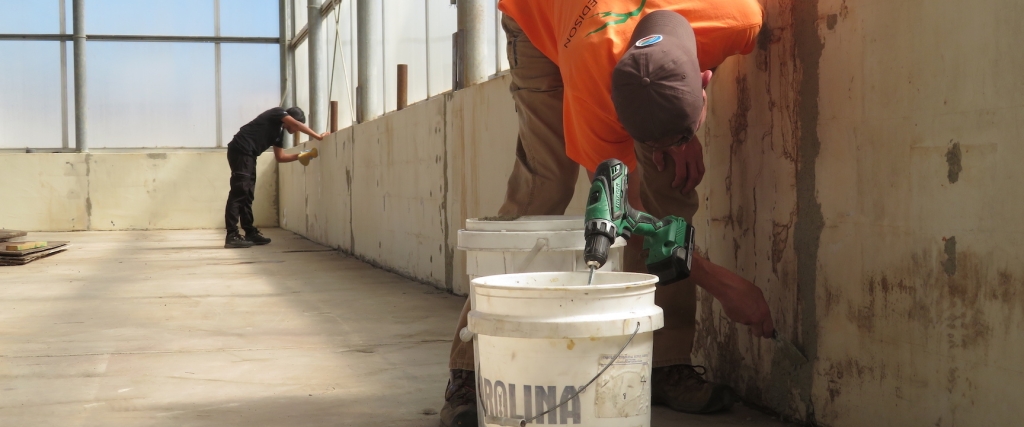
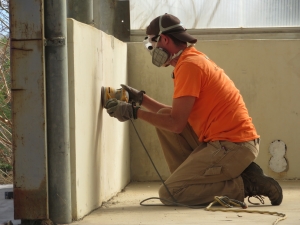 In early 2023 the SAM project received its first round of funding dedicated to the renovation of the former Biosphere 2 rain forest greenhouse into a 6,400 sq-ft indoors Mars yard. The University of Arizona center for Research, Innovation, and Impact (RII) sees significant value in the creation of an advanced Mars yard, a place for education, research, and innovation.
In early 2023 the SAM project received its first round of funding dedicated to the renovation of the former Biosphere 2 rain forest greenhouse into a 6,400 sq-ft indoors Mars yard. The University of Arizona center for Research, Innovation, and Impact (RII) sees significant value in the creation of an advanced Mars yard, a place for education, research, and innovation.
Significant prior effort had been applied, from initial destruction of adjacent structures to tearing down the old roof panels; from work on the exterior walls to installing a new roof.
Now, we are continuing to renovate the structure, starting at the foundation walls. Once complete, we can design our first basic layout, install basalt left over from the LEO project, and place varied boulders (even if not igneous based) to form a terrain park for our first, visiting research teams.
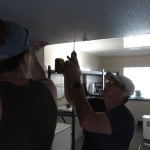 In parallel, fabrication of the interior of SAM continues, with immediate focus on completing the electrical panel, UA approved smoke and fire detection system, and routing conduit and circuits to the bathroom, kitchen, and crew quarters.
In parallel, fabrication of the interior of SAM continues, with immediate focus on completing the electrical panel, UA approved smoke and fire detection system, and routing conduit and circuits to the bathroom, kitchen, and crew quarters.
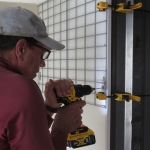 In order to bring power into the renovated 40′ shipping container, we must route Carflex conduit through one of two pressure hull bridges. This invokes a bottle neck as this is a passage the crew will use regularly as they move from the crew quarters into the workshop and subsequent Test Module (controlled environment for plant growth). As such, it is imperative that the conduit be non-intrusive and secured.
In order to bring power into the renovated 40′ shipping container, we must route Carflex conduit through one of two pressure hull bridges. This invokes a bottle neck as this is a passage the crew will use regularly as they move from the crew quarters into the workshop and subsequent Test Module (controlled environment for plant growth). As such, it is imperative that the conduit be non-intrusive and secured.
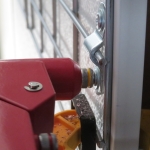 Given that we cannot penetrate any wall surface that holds pressure, we must carefully select the structure elements able to receive a bolt, metal screw, or rivet. We were able to reuse two former steel shelf grids, reduced in size, as a means to secure electrical conduit to the wall in such a way that it can be readily adjusted, even moved in the future.
Given that we cannot penetrate any wall surface that holds pressure, we must carefully select the structure elements able to receive a bolt, metal screw, or rivet. We were able to reuse two former steel shelf grids, reduced in size, as a means to secure electrical conduit to the wall in such a way that it can be readily adjusted, even moved in the future.

